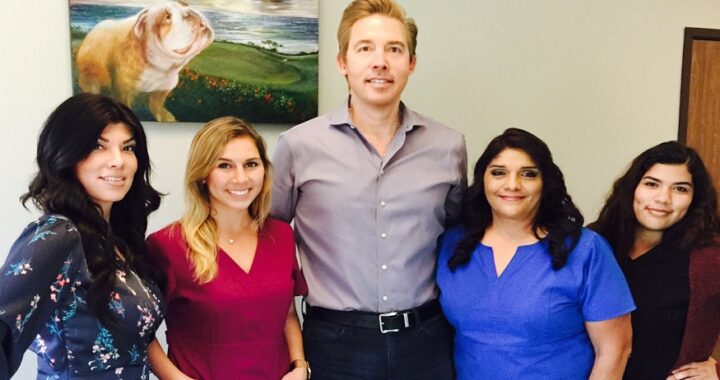What Is Rapid Transformational Therapy (RTT) and How It Differs from Traditional Hypnotherapy

When it comes to personal transformation and emotional healing, there are countless therapeutic approaches available today. Among these, hypnotherapy has long been recognised as a powerful tool for harnessing the subconscious mind to create meaningful change. However, in recent years, a newer, more integrative method known as Rapid Transformational Therapy (RTT Therapy) has gained global recognition for its speed, depth, and effectiveness.
As both a professional writer and a practitioner in the field, I know that people often wonder: What exactly is RTT, and how does it differ from traditional hypnotherapy? This article aims to answer that question in detail. We’ll look at RTT’s origins, its unique blend of techniques, and why it is considered one of the most effective therapeutic models today. We’ll also compare it with conventional hypnotherapy, so you can make an informed decision if you’re considering therapy.
Understanding Hypnotherapy: The Foundations
Before exploring RTT, it’s important to understand the roots of traditional hypnotherapy. Hypnotherapy is a therapeutic practice that uses hypnosis—a natural, relaxed state of focused attention—to access the subconscious mind. In this state, clients are more receptive to suggestion, allowing the therapist to introduce positive affirmations, ideas, and perspectives that can help address issues such as:
- Stress and anxiety
- Phobias and fears
- Smoking cessation and weight loss
- Sleep disturbances
- Confidence and self-esteem
Traditional hypnotherapy has been used for decades and is supported by a growing body of evidence in psychology and medicine. Its strength lies in its ability to bypass the critical, analytical part of the brain and communicate directly with the subconscious, where deeply held habits and beliefs reside.
However, hypnotherapy can sometimes be a gradual process, requiring multiple sessions to reinforce suggestions and embed new thought patterns. While effective, it often focuses on symptom relief rather than the deeper root causes of issues. This is where RTT sets itself apart.
The Origins of Rapid Transformational Therapy (RTT)
RTT was developed by renowned Hypnotherapist Marisa Peer, who combined her three decades of clinical experience into a method that integrates the most effective aspects of hypnotherapy with other proven therapeutic techniques.
RTT draws on:
- Hypnotherapy – to access the subconscious mind and enter a receptive, transformative state.
- Neuro-Linguistic Programming (NLP) – to reframe language, thoughts, and behaviours.
- Cognitive Behavioural Therapy (CBT) – to challenge unhelpful thought patterns and replace them with healthier ones.
- Psychotherapy – to explore and resolve the root causes of emotional and behavioural issues.
This combination makes RTT unique. Instead of working solely on the surface with suggestions, RTT identifies and reprogrammes the root beliefs and emotional imprints that drive behaviour. As a result, clients often experience significant change in just one to three sessions, compared to the longer timelines typically associated with traditional therapy.
How RTT Works in Practice
A typical RTT session involves several carefully designed stages:
- Induction into Hypnosis – The client is guided into a relaxed, trance-like state, which opens access to the subconscious mind. Contrary to misconceptions, the client remains fully aware and in control throughout.
- Regression Techniques – Unlike many forms of hypnotherapy, RTT uses regression to revisit key moments from the past. This is not about reliving trauma but about understanding where negative beliefs originated. For example, a client struggling with self-worth may regress to a childhood experience where they felt rejected.
- Identification of Root Causes – Once these experiences are surfaced, the therapist helps the client recognise how early events created limiting beliefs that continue to shape current behaviours and emotions.
- Reframing and Reprogramming – Through dialogue and therapeutic tools, the client reframes these past experiences and releases the emotional charge attached to them. The therapist then uses empowering suggestions, visualisation, and language to implant new, positive beliefs.
- Personalised Transformational Recording – After the session, clients receive a bespoke audio recording designed to reinforce the new beliefs. Listening daily for 21 days helps embed the changes, creating lasting transformation.
This structured approach means RTT doesn’t just treat the symptom — it addresses the cause, rewrites the narrative, and empowers the individual to move forward with clarity and confidence.
Key Differences Between RTT and Traditional Hypnotherapy
Now that we understand both methods, let’s compare them side by side.
1.Focus on Root Cause vs. Symptom Relief
- Traditional Hypnotherapy: Often works with direct suggestion therapy, which helps manage or reduce symptoms. For example, a person might be given affirmations to feel more confident or to stop smoking.
- RTT: Goes deeper by uncovering why the issue exists. If someone smokes, RTT would explore what belief or need the smoking fulfils (comfort, belonging, coping with stress) and then reframe that belief before suggesting healthier alternatives.
2. Therapeutic Integration
- Traditional Hypnotherapy: Primarily uses hypnosis and suggestion as its tools.
- RTT: Blends multiple therapeutic approaches, meaning it doesn’t just “suggest” but also heals, challenges, and reframes.
3. Speed of Results
- Traditional Hypnotherapy: May require several sessions over weeks or months for gradual improvement.
- RTT: Frequently achieves noticeable breakthroughs in 1–3 sessions, making it highly appealing for clients seeking rapid transformation.
4. Client Empowerment
- Traditional Hypnotherapy: Clients often rely on repeated sessions with the therapist to reinforce suggestions.
- RTT: Empowers clients through personalised recordings and the reframing process, encouraging long-term independence and resilience.
5. Application Range
Both methods are versatile, but RTT is particularly effective for complex, deep-seated issues such as:
- Anxiety and depression
- Childhood trauma
- Confidence and self-worth
- Imposter syndrome
- Phobias
- Addictions
- Sleep disorders
- ADHD and focus challenges
Why RTT Works Faster
The reason RTT can achieve such fast results lies in its methodology. By uncovering and resolving the root cause, clients no longer need to fight against their own subconscious programming. Traditional hypnotherapy may soothe the symptom, but RTT rewrites the script altogether.
For example:
- A client with social anxiety may discover in RTT that their fear of judgment comes from a single childhood incident of embarrassment at school. By revisiting and reframing that event, the emotional charge is removed, and the belief that “I am not good enough” is replaced with confidence and self-acceptance.
- This approach creates a shift at the subconscious level, allowing conscious behaviour to align naturally without willpower struggles.
Common Misconceptions About RTT
As with any therapy, there are misconceptions worth clearing up:
- “It’s just hypnotherapy under a new name.”
Not true. While hypnosis is the foundation, RTT integrates multiple therapeutic tools, making it broader and more impactful. - “It’s about reliving trauma.”
RTT uses regression, but the purpose is understanding and reframing, not re-traumatisation. Clients view past events with adult awareness and perspective. - “It’s a quick fix that won’t last.”
While many clients experience immediate relief, the personalised recording and integration process ensure changes are embedded for long-term results.
The Client Experience
Clients often describe RTT sessions as deeply enlightening and empowering. Many report:
- Immediate clarity about the origins of their struggles.
- A sense of relief from letting go of old beliefs.
- Noticeable behavioural and emotional changes in the days following.
- Long-term improvements reinforced by listening to their personalised recording.
The process feels collaborative. Clients are active participants, working with the therapist to rewrite their story and build new mental pathways.
RTT in Comparison with Coaching and Counselling
It’s also worth noting how RTT fits within the wider therapy landscape.
- Coaching focuses on goal-setting and action but may not address subconscious blocks.
- Counselling provides emotional support and exploration but may take months or years to resolve deep issues.
- RTT bridges the gap by combining exploration of root causes with immediate reprogramming, creating both insight and transformation in one model.
Who Can Benefit from RTT?
RTT is suitable for a wide range of individuals, including those seeking help with:
- Stress, anxiety, and panic attacks
- Low self-esteem or imposter syndrome
- Emotional eating and weight management
- Insomnia or disrupted sleep patterns
- ADHD-related focus and self-regulation challenges
- Smoking, alcohol, or other addictive behaviours
- Trauma and unresolved childhood experiences
- Performance enhancement in careers, sports, or public speaking
Because RTT works at the subconscious level, its impact is often broader than expected. Clients may come in to resolve one issue but find that related areas of life improve simultaneously.
The Future of RTT
As awareness of RTT grows, it is being recognised worldwide as a forward-thinking therapy that combines the best of traditional methods with modern psychology. With increasing demand for short-term, solution-focused interventions, RTT is well-placed to become one of the most influential approaches in the field of mental and emotional wellbeing.
Final Thoughts
Both traditional hypnotherapy and Rapid Transformational Therapy (RTT) are powerful methods for accessing the subconscious mind and creating change. Hypnotherapy is proven, reliable, and effective for gradual improvements. RTT, however, takes the process further — integrating multiple therapeutic techniques, uncovering root causes, and achieving faster, more profound results.
If you are seeking transformation in your life—whether overcoming anxiety, finding restful sleep, boosting confidence, or addressing ADHD—RTT offers a unique, accelerated pathway. It is therapy designed not only to heal but also to empower, helping individuals unlock their full potential and live with greater freedom, clarity, and purpose.

 This Can Be a Magical Therapy for You If You Have Anxiety.
This Can Be a Magical Therapy for You If You Have Anxiety.  Top Reasons Why Couples Go To Therapy
Top Reasons Why Couples Go To Therapy  How to Integrate Chiropractic With Your Exercise Program
How to Integrate Chiropractic With Your Exercise Program  Top Benefits of Seeing a Therapist for Anxiety
Top Benefits of Seeing a Therapist for Anxiety  Why PEMF Therapy Is Used on Both Humans & Animals
Why PEMF Therapy Is Used on Both Humans & Animals  How can Physiotherapy help?
How can Physiotherapy help?  NATURAL AND MINDFUL WAYS TO MANAGE NICOTINE CRAVINGS
NATURAL AND MINDFUL WAYS TO MANAGE NICOTINE CRAVINGS  How to Choose the Best Products for Hyperpigmentation Based on Your Skin Type
How to Choose the Best Products for Hyperpigmentation Based on Your Skin Type  How Mind-Body Health Fits into Chronic Care
How Mind-Body Health Fits into Chronic Care  What Is Rapid Transformational Therapy (RTT) and How It Differs from Traditional Hypnotherapy
What Is Rapid Transformational Therapy (RTT) and How It Differs from Traditional Hypnotherapy